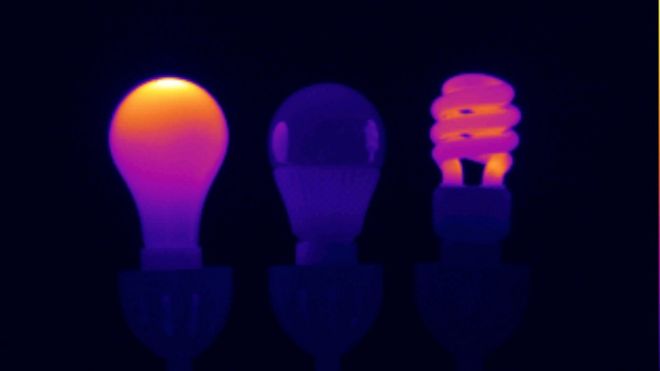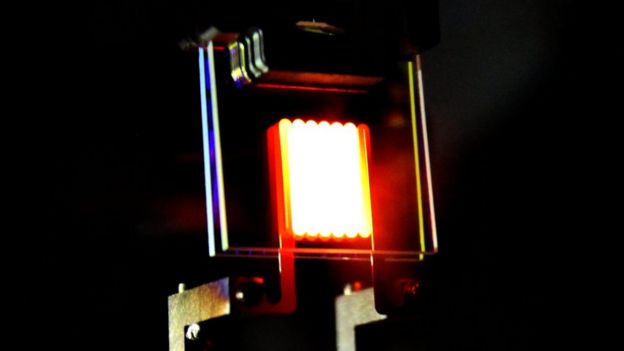This here is a sign of the times and will only be increasing. imo
Drug shortages in American emergency rooms have increased more than 400 percent
Emergency rooms are health care's front line - in the United States, nearly 45 out of 100 people visit an ER in any given year. But there's an issue brewing behind the scenes in emergency medical facilities, one that can't be fixed by a simple stitch or bandage. A new study published in the journal Academic Emergency Medicine shows that drug shortages in ERs across the United States increased by more than 400 percent between 2001 and 2014.The study analyzed data from the University of Utah Drug Information Service, which receives drug shortage reports submitted through a public site administered by the American Society of Health-System Pharmacists. Two practicing emergency room physicians assessed whether the reported shortages had to do with drugs used in ERs, then looked at whether they were associated with lifesaving or acute conditions.
That's nothing less than a public health crisis, said Jesse Pines, director of the office for clinical practice innovation at George Washington University School of Medicine & Health Sciences and the study's senior author. Shortages "are real, they're happening, and they're getting worse," he said. Pines, who practices emergency medicine, said that though emergency rooms are implementing things like providing posters with quick alternative drug options, there's no obvious way to cut shortages.
The primary reasons given for shortages were manufacturing delays (25.6 percent), supply and demand (14.9 percent), and availability of raw materials (4.4 percent). Pharmaceutical companies listed "business decision" as the reason for a shortage 2.1 percent of the time. But in over 46 percent of the shortages studied, there was no reason given.
Pharmaceutical Research and Manufacturers of America (PhRMA), an industry group, points the finger at secondary wholesalers. "The manufacturer of a drug has no influence or control over the prices charged by a secondary wholesaler to a hospital or pharmacy," the group said in a statement on its website. Supply chain issues and raw materials shortages can also play into shortages.
The Healthcare Distribution Management Association, a wholesaler industry group, writes that "many factors" may result in product shortages and that they typically happen with "insufficient warning and often [require] significant time and resources to manage."
Could Food and Drug Administration intervention solve the problem? Not exactly: Though the FDA has issued a long-term strategic plan to prevent drug shortages, it admitted it cannot require pharmaceutical companies to make certain drugs, produce more of a drug or change the amount distributed. "There are a number of factors that cause or contribute to drug shortages that are outside of FDA's control," the agency wrote in an infographic about the issue.
Ironically, increased FDA oversight might even create more shortages - researchers note that rather than invest in infrastructure or submit to enhanced inspections, businesses may decide simply to stop producing drugs. "This is one of the byproducts of a focus on cost in health care," explained Pines. "There may be a demand for medication, but it may not be in a company's best interest to produce it because the amount they can charge is often lower than the amount it costs to manufacture it."
It seems simple enough: If companies produce more drugs, more drugs will be available to ERs. But given that the majority of drugs on shortage in emergency rooms are sterile injectables with low profit margins, don't expect that to happen anytime soon. "There are many ways to mitigate drug shortages, but there's no magic bullet to solve them," said Pines. "This could and potentially will get worse."
http://www.chicagotribune.com/lifestyles/health/ct-emergency-room-drug-shortages-20160124-story.html
New development could lead to more effective light bulbs

US researchers say they have developed a technique that can significantly improve the efficiency of the traditional incandescent light bulb.
These older bulbs have been phased out in many countries because they waste huge amounts of energy as heat.But scientists at MIT have found a way of recycling the waste energy and focusing it back on the filament where it is re-emitted as visible light.
The development has been reported in the journal Nature Nanotechnology.
Little has changed in the technology of the incandescent light bulb since they were commercially developed by Thomas Edison in the US in the 1880s.
They create light by using electricity to heat a thin tungsten wire filament to temperatures of around 2,700C. This causes the filament to glow and produce a broad-spectrum warm white light.
However light bulbs of this type are hugely inefficient - they only convert around 2-3% of the energy they use into light - the rest is wasted as heat.
They have long been a target for green campaigners, concerned about climate change.
Phased out
This has seen the bulbs banned in the European Union, Canada and their manufacture and importation has been phased out in the US.They've been replaced by more expensive compact fluorescent (CFL) and LED bulbs which are significantly more efficient at around 13%.
Now researchers at MIT believe they have developed a technique that could turn the weakness of the traditional incandescent bulb into a strength.
Using nanotechnology, they've built a structure that surrounds the filament of the bulb and captures the leaking infrared radiation, reflecting it back to the filament where it is re-absorbed and then re-emitted as visible light.
 Image copyright MIT
Image copyright MIT "It is not so much the material you make the surrounding structure from, it is how you arrange the material to create the optical filtering property that will recycle infra red light and let the visible light through," Ognjen Illic, the paper's lead author told BBC News.
In theory, the crystal structures could boost the efficiency of incandescent bulbs to 40%, making them three times more efficient than the best LED or CFL bulbs on the market.
The researchers have built their first proof-of-concept units which reach an efficiency of 6.6%, but even that is almost three times the level of a standard incandescent bulb.
So do the researchers think that they can build a better light bulb?
"I would not exclude the possibility," said Prof Marin Soljacic, another author on the paper.
"Thomas Edison was not the first one to work on the design of the light bulb, but what he did was figure out how to mass produce it cheaply and keep it stable longer than 10 hours, these are still the the two critical criteria. These are the questions we are trying to answer now," he said.
The scientists point out that improving light bulbs is but one of the options that could spring from this development. The authors say it could have "dramatic implications" for the performance of other energy conversion technologies.
"We have this huge challenge that the world is facing right now, global warming and energy efficiency and this gives you one more tool in the toolbox to meet that huge challenge," said Prof Soljacic.
"We are very excited about the potential though."
http://www.bbc.com/news/science-environment-35284112
JFK allowed passengers arriving on international flight to exit without going through Customs
Passengers arriving at Kennedy Airport on an international flight were allowed to exit the busy hub without going through Customs — for at least the second time in recent months, the Daily News has learned.Bumbling airline and security officials let travelers on American Airlines Flight 1223 from Cancun, Mexico, out of the airport on Monday morning without having their passports or bags checked, sources told The News.
The security lapse mirrored a similar incident involving another American Airlines flight in November.
A 34-year-old man who had been in Cancun to attend three Phish concerts told The News he was able to glide from the plane to the baggage claim area without having to endure the usual maze of Customs and Border Protection security checks.
 DelMundo, Anthony freelance NYDN/Anthony DelMundo
DelMundo, Anthony freelance NYDN/Anthony DelMundoAirline and security officials let travelers on American Airlines Flight 1223 from Cancun, Mexico, out of the airport without having their passports or bags checked, sources told The News.
EXCLUSIVE: 150 ON FLIGHT FROM MEXICO ALLOWED TO SKIP CUSTOMS, LEAVE JFK
“It’s absolutely absurd,” the business adviser said. “To think that anyone could be walking off of that plane and just get right into the city. It could be terrorists, El Chapo’s henchmen, anyone.”
The jam band fan said he even approached a Transportation Security Administration agent near the exit, but was told he was free to go.
“I told them what happened and asked them what should I do,” the passenger said. “They said to me ‘That’s fine, you’re OK. Go ahead.’ ”
Several other concertgoers who were on the flight were already outside at the curbside cab line when he exited the airport.
A man who had been in Cancun to attend three Phish concerts told The News he was able to glide from the plane to the baggage claim area without having to endure Customs and Border Protection security checks.
Neither the TSA, which screens passengers before they fly, nor the U.S. Customs and Border Protection, part of the Department of Homeland Security, responded to a request for comment.
It was unclear how many of the passengers from the flight were able to skip the security checkpoints
WOMAN ACCUSED OF TRYING TO BRIBE TSA CUSTOM AGENT WITH SEX
Hours after the plane landed, American Airline officials pleaded with the Manhattan man — and presumably other passengers — to return to Kennedy and complete the customs process.
“I apologize for any inconvenience this may be for you; however it is a Customs requirement that every passenger entering the United States must clear Customs,” the airline wrote in an email sent to passengers.
“You could tell that they knew they screwed up and were desperate to get me to come,” the passenger added.
The oversight sparked fears that terrorists could easily slip into the country without having to pass through any checkpoints.
“New York remains the number one target for terrorists and it just made me think of Paris and how easy it would be for them to get in,” he said. “It’s incompetence like this that could lead to another attack.”
NYC SLOWLY RETURNS TO NORMAL AFTER MAMMOTH BLIZZARD
A nearly identical incident involving another American Airlines flight from Cancun unfolded in November, just two days after ISIS released a video threatening New York City with a terrorist attack, The News reported.
American Airlines admitted to the latest security snafu in a statement, but declined to say what they were doing about it.
“We take the safety and security of our customers, employees and operation very seriously,” the company said. “Some passengers on flight 1223 did not complete immigration and customs process upon arrival when they were inadvertently directed to the domestic terminal.”
After the November incident, a Customs spokesman told The News that the agency was “aware of and looking into the incident and is working with our counterparts to resolve it.”
http://www.nydailynews.com/new-york/jfk-allowed-passengers-exit-customs-article-1.2507437
No comments:
Post a Comment